UC Blogs
'When You Learn, Teach...'
He died too soon, a life cut short by a disease he never knew he had. It happened 14 years ago tomorrow. Chemical ecologist Sean Duffey (right),...
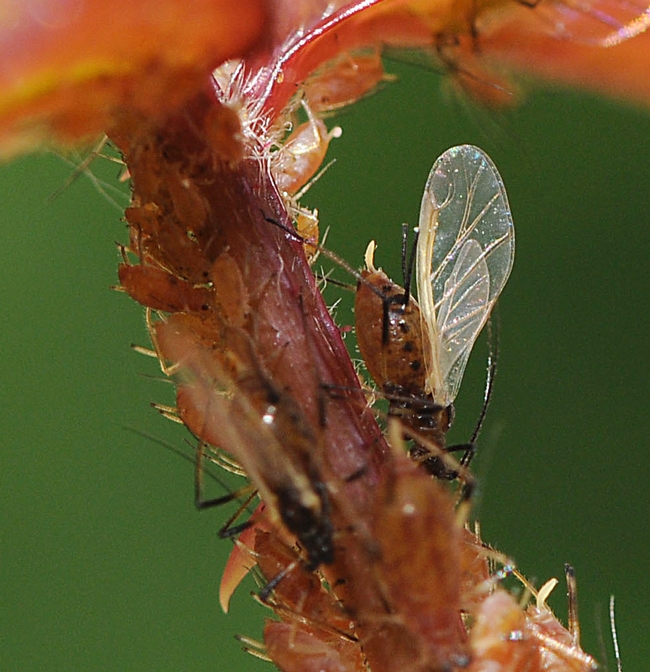
Gary Felton will speak on plant-herbivore interactions at the Thomas and Nina Leigh Distinguished Alumni Seminar. These are aphids on a rose. (Photo by Kathy Keatley Garvey)
eXtension helps small-scale meat producers find processors
A national network for niche meat processors is being developed by eXtension to connect small-scale meat producers across the country with information, tools and each other, reported Food Safety News.
The Niche Meat Processors Assistance Network (NMPAN) was launched three years ago by co-coordinators Lauren Gwin of Oregon State University and Arion Thiboumery of Lorentz Meats of Minnesota.
"I was working for University of California Cooperative Extension, and processing kept coming up as an issue," Gwin was quoted in the story. "I found myself being the person keeping track of what different people in different parts of the state were doing on the processing question, how they could get access to processing, the venues needed. I realized it would be very valuable to have a network (of people) around the country who were also looking at this."
NMPAN hosts webinars and extends resources online via email updates. The network already includes affiliates in 40 states.
"One of the things we talk about is we need more processors and in some parts of the country that's actually true. But in some parts of the country small processors are struggling just to stay afloat because it's a very difficult industry to be in," Gwin said.
The NMPAN website includes case studies, such as one about a small USDA-inspected, family-owned slaughtering plant in Pennsylvania that handles about 45 head of cattle, 5 bison, 5 to 10 hogs and occasionally sheep and goats each week.
A detailed portrait of the company offers information about its services, prices and experiences as an example to others who might want to expand their own operations or start a facility from scratch. A Q&A conversation with the owners illustrates how farmers and the facilities they rely upon can best help each other and coordinate their efforts.
"We're just trying to keep putting together tools and get them out there that will help small processors do what they do, and will help producers find and work with existing processors and, when necessary, help them build facilities," Gwin said.
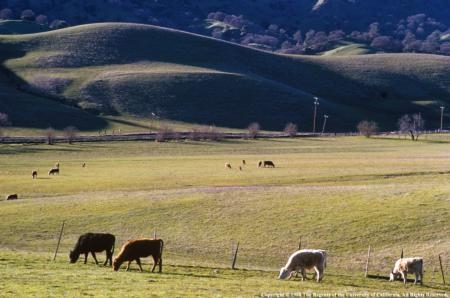
A major challenge for small-scale meat producers is finding processors.
The Science of Exchanging
A touch of Brazil and a desire to exchange science and technology...That's what will happen on the UC Davis campus Monday, May 23 when a...
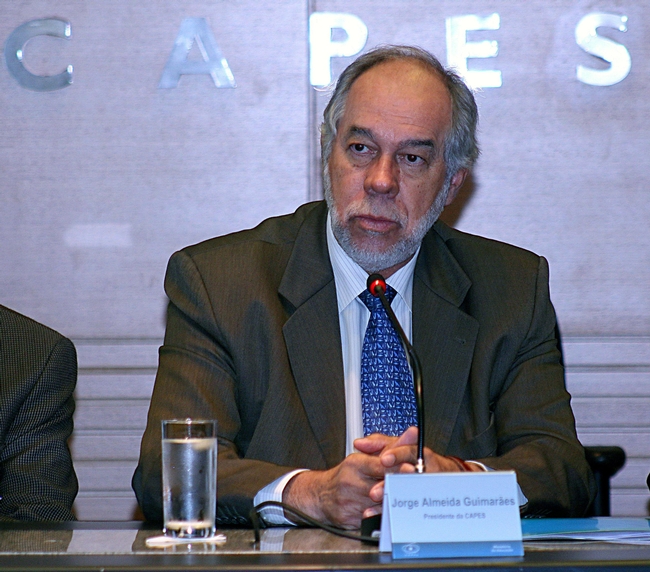
Jorge Almeida Guimarães, president of CAPES, Ministry of Education, will visit UC Davis May 23.
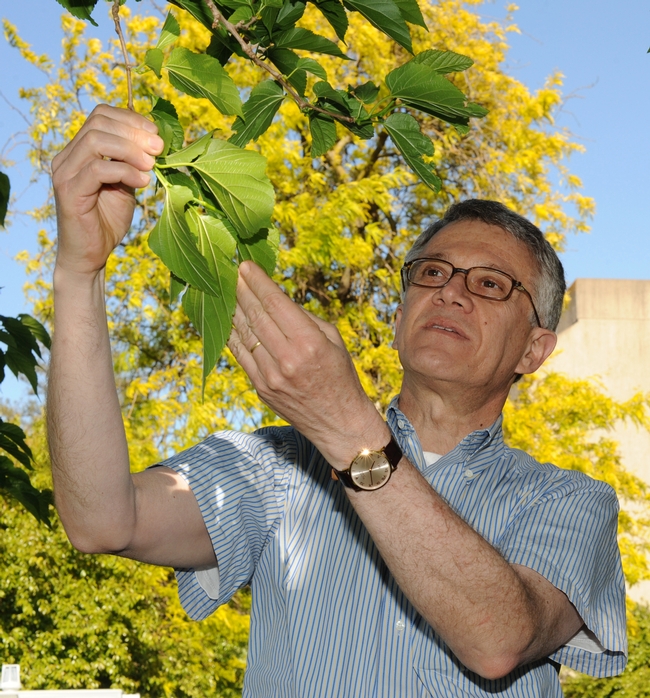
UC Davis professor Walter Leal, who does pheromone research on silkworm moths, examines a mulberry tree. (Photo by Kathy Keatley Garvey)
Two animal updates in the Merced Sun-Star
News about animals under study in distinct branches of UC Agriculture and Natural Resources were featured recently in the Merced Sun-Star. A female Pacific fisher being tracked in the Sierra Nevada by UC Berkeley scientists has established a den within Yosemite National Park, the paper reported. Meanwhile, UC Davis scientists are joining in research with Michigan State University to study the housing of egg-laying hens, another story said.
Researchers with the Sierra Nevada Adaptive Management Program Fisher Project track fishers, endangered members of the weasel family, using radio-telemetry. The Yosemite fisher was first captured in October 2009 in the Sierra National Forest and remained near the capture site for nearly a year. Recently, the fisher moved her kits to a den on the south side of Yosemite.
This is the first fisher that is part of the study to make a home within park boundaries.
In the chicken story, the newspaper reported that UC Davis and Michigan State received $6 million for the study from the Coalition for Sustainable Egg Supply, a group made up mostly of egg producers, purchasers and universities with major agriculture programs.
The research will compare three approaches to chicken housing:
- Conventional cage housing, now used by most U.S. egg producers.
- Enriched cage housing, larger than conventional cages and equipped with perches, nesting areas and foraging/dust-bathing materials.
- Cage-free aviary, a non-cage system that enables hens to roam along a building's floor level and have access to perches and nest boxes.
"The information gained will be useful to all consumers as they make decisions about what kinds of eggs to buy," the story quoted Joy Mench, a UC Davis animal science professor and director of the Center for Animal Welfare.
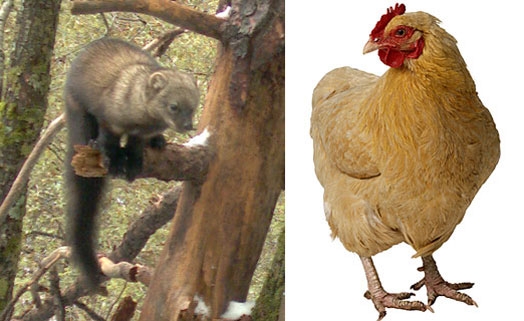
Pacific fisher, left, dens in Yosemite. UC Davis launches chicken housing study.
Lovely to Look at, but...
They're definitely attracted to it.Honey bees forage furiously on the California buckeye (Aesculus californica).It's not a good bee plant, though....
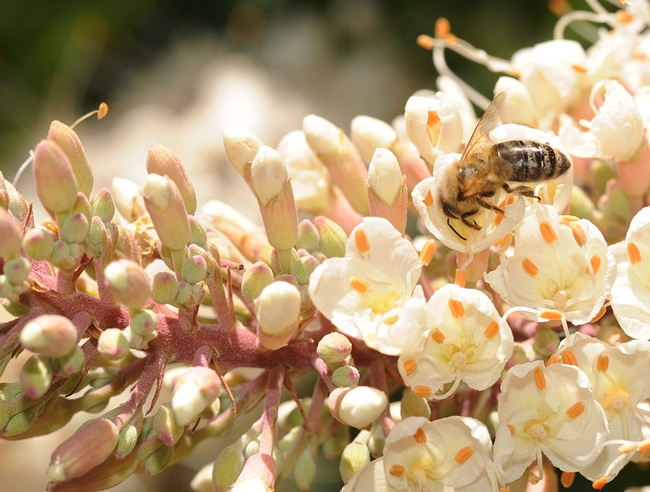
Honey bee foraging on buckeye blossoms. (Photo by Kathy Keatley Garvey)
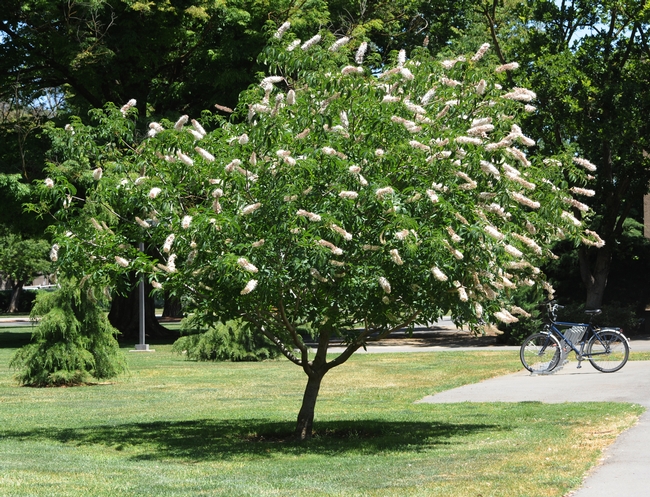
California buckeye in bloom behind Hoagland Hall at UC Davis. (Photo by Kathy Keatley Garvey)

